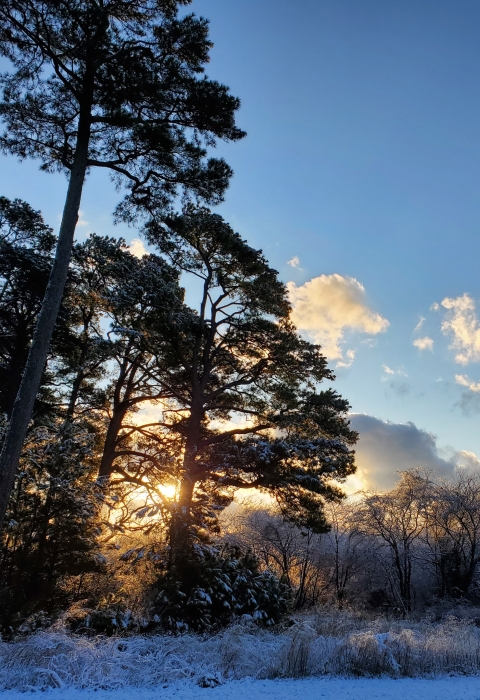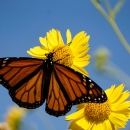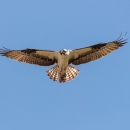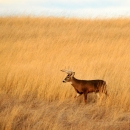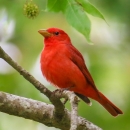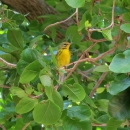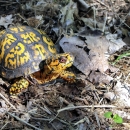Seasons of Wildlife
SPRING
In spring, splashes of color pop up as marsh pink and other wildflower flowers bloom. Migrating songbirds delight visitors as they pass through the refuge on their way to nesting grounds. Watch for marsh and shorebirds search for food in shallow waters while ospreys fish over open water and make repairs to their nests.
SUMMER
As spring gives way to summer, the endangered northeastern beach tiger beetle scurries along refuge beaches, while the threatened loggerhead sea turtle feeds in the rich waters of the Chesapeake Bay. The marine turtles found in the bay are all listed as threatened or endangered. This includes the leatherback, green turtle, Atlantic hawksbill, and rarest of all the Kemp's Ridley. In refuge grasslands, butterflies and skippers with vivid names such as painted lady and pearl crescent dart between flowers.
FALL
From late August through November, visitors can catch a glimpse of migratory raptors such as osprey and hawks. Watch as clouds of tree swallows swirl over ponds and yellow-rumped warblers alight on shrubs and in the forests. Iconic monarch butterflies float aloft, with peak days bringing numbers upwards of 100,000 in to roost overnight. The animals arrive in waves, with weather patterns pushing species through on their long journeys to their wintering grounds
WINTER
American woodcock zoom and twitter as they fly from woods to fields at dusk from late November to February. Also, the tiny northern saw-whet owl migrates down the lower Delmarva Peninsula to winter here. During winter days, northern harriers fly low over fields in search of rodents, while American kestrels perch in strategic locations searching for prey. Black ducks and other dabbling ducks feed in refuge marshes. After sunset, snow geese and swans are often heard overhead.
Featured Species
The varied habitats of the Eastern Shore of Virginia National Wildlife Refuge support a diversity of wildlife throughout the year. Refuge woodlands and fields provide year-round homes for Carolina chickadees, Carolina wrens and several species of owls and woodpeckers. Thirty-four species of mammals, including river otter, American mink, gray and southern flying squirrels, Virginia opossum, raccoon, white-tailed deer, red and gray fox, coyotes and nine species of bats make their home on the refuge. Seasonal changes and varied habitats support a diversity of wildlife from one month to the next.
